As India’s power sector undergoes a digital and green transformation, Madhya Pradesh Madhya Kshetra Vidyut Vitaran Company Limited (MPMKVVCL) is stepping up with the times. In an exclusive conversation with APAC Media, Kshitij Singhal, IAS, Managing Director, MPMKVVCL, outlines the organisation’s strategic roadmap to become one of India’s leading power distribution utilities.
Madhya Pradesh Madhya Kshetra Vidyut Vitaran Company Limited has set an ambitious goal to become the best state distribution utility in India. Could you elaborate on the key strategies currently in place to realize this vision?
Our strategic plan primarily focuses on several critical areas, which are aimed at:
Infrastructure Modernization and Technological Upgrades: We are upgrading our existing infrastructure, including transformers, substations, and distribution lines, to reduce technical losses and improve power quality. We are currently in the process of implementing the RDSS scheme, under which approximately 2 lakh smart meters have been installed, and various infrastructure works like new substations, augmentation and bifurcation of lines, and feeder separation are being done.
Enhanced Customer Service: We have established a multi-channel customer support system, including call centers, mobile applications, and online portals, to provide quick and efficient service.
Loss Reduction and Efficiency Improvement: We have implemented measures to identify and reduce both technical and commercial losses through regular audits and monitoring. We are also taking steps for the reduction of line losses through infrastructure works under RDSS and commercial losses through smart metering. We have also taken steps through various schemes to motivate the entire workforce to align their vision with the company’s goal.
Renewable Energy Integration: We encourage consumers to adopt rooftop solar panels with net metering options, which allow them to contribute to the grid and reduce their energy bills.
Human Resource Development: We are investing in the continuous training and development of our workforce to ensure they are equipped with the latest skills and knowledge. Discom has launched various incentive schemes for its employees in order to improve the efficiency of work and make the workforce competent as per the market standards, like the BRICS scheme, RACE scheme, Informer scheme, etc.
Financial Management and Investment: We are implementing financial strategies to optimize operational costs without compromising on service quality. In addition, we are encouraging research and innovation to explore new technologies and practices that can enhance our distribution capabilities.
Regulatory Compliance and Governance: We are ensuring all operations comply with the latest regulatory requirements and standards. Through these comprehensive strategies, MPMKVVCL is committed to not only improving its operational capabilities but also contributing to the overall development of the power sector in Madhya Pradesh and setting benchmarks for excellence in the distribution utility sector across India.
MPMKVVCL has made significant progress in various areas. Could you share some of the major highlights and achievements of the company so far? Additionally, what is the roadmap for the future, and how do you envision the company’s growth in the coming years?
In recent years, significant advancements have been made by the MPMKVVCL in the realm of digital solutions:
1. The launch of the Vigilance App, which received the PSU IT Award in 2023, offers a comprehensive digital solution for vigilance activities, approved by the judiciary. It employs AI/ML for priority push notifications, enhancing efficiency.
2. Another achievement is the ‘Saral Saiyojan Portal’ for new service connections (NSC), recognized with the PSU IT Award in 2024. This simplified portal has enabled consumers to get an NSC with only two documents and a single demand letter, facilitating a completely online application procedure and eliminating the need for consumers to visit DISCOM offices. For those unable to apply online, offline application facilities are available at DISCOM offices. Additionally, contractor details for testing certificates are accessible on the website, including names and mobile numbers.
3. Furthermore, the Project Execution and Monitoring System, also awarded the PSU IT Award in 2024, ensures seamless online management of RDSS projects from conception to commissioning.
In the coming years, MPMKVVCL aims to solidify its position as a leader in efficient and sustainable power distribution. The envisioned growth includes:
- Achieving significant reductions in AT&C losses and improving operational efficiency across all service areas.
- Expanding the renewable energy portfolio to increase its share in the overall energy mix, contributing to environmental sustainability.
- Enhancing consumer satisfaction through improved service delivery and innovative energy solutions.
- Supporting regional economic growth by enabling a reliable power supply and advocating for industrial development initiatives.
Through these efforts, MPMKVVCL seeks to ensure a reliable, sustainable, and cost-effective power supply for its consumers while contributing to the broader goals of energy security and economic development in the region.
Technology is a driving force in the transformation of the power sector. How is MPMKVVCL utilizing technological advancements to enhance electricity distribution and minimize power interruptions across Madhya Pradesh?
MP Discoms are extensively utilizing technology to ensure the quality and reliability of the power distribution sector and also to establish good governance practices. Some of the live use cases are SCADA, Auto Cut Transformer, Large Scale Smart Meterization, MDAS/RT-DAS, Supply Hours Monitoring Portal, SPEC (Survey, Planning, Execution, and Continuous Monitoring)-based maintenance, and WFMS (workforce management system) for tracking maintenance activities.
Further, in order to ensure quality and reliability in the operation of the distribution system, DISCOMs have set up in-house NABL-accredited, fully automatic testing labs for material testing, which signifies their commitment to ensuring quality and reliability in their operations.
In order to enhance the reliability of supply, a ring mains unit has been proposed under the RDSS scheme for urban areas. With the RMU system in place, voltage fluctuation at the consumer’s end can be minimized. In the event of a fault in any section of the feeder, the continuity of supply is ensured from an alternative supply, which helps in increasing the consumer satisfaction level.
We are exploring the possibility of multiple injections from TRANSCO’s 132/33 kV or 220/33 kV substations to Discom’s 33/11 kV substation to help improve the reliability of Discom’s substation. By having multiple injection points, the Discom can benefit from increased redundancy and flexibility in power supply. Multiple injection points provide alternative sources of power, reducing the risk of complete power loss in case of a fault or outage at one injection point. If one injection point fails, power can still be supplied from the remaining injection points, improving overall reliability. Discom can distribute the load among different injection points based on demand, thereby achieving load balancing. If one injection point needs to be taken offline for maintenance or repairs, power can still be supplied through the other injection points, minimizing the impact on the Discom’s operations.
DTRs are connected to the feeders via an AB switch. This will ensure that the specific DTR that is under repair/maintenance is isolated while maintaining the supply in the rest of the feeder. This will improve the supply hours of the feeder, hence increasing the billing units and consumer satisfaction.
Auto-Cut system for DTR has been developed in-house by Discoms using relay and contactor arrangements inside the tank of the DTR. With this system in place, the DTR will automatically get cut off at a pre-designed load and reconnect at normal loading, thus protecting the DTR from overloading. The system that is placed inside the tank has very little chance of tampering.
A major objective for MPMKVVCL is to become commercially viable and reduce its dependence on government support. What steps are being taken to ensure financial sustainability while keeping tariffs affordable for consumers?
Madhya Pradesh, being an agriculture-rich state, has approximately. 60% of the consumers reside in rural areas where the paying capacity is comparatively low. It is also imperative to mention that reducing the agricultural input cost of power is a major component that reduces the cost of agriculture through subsidies. However, various initiatives have been taken by the MP state towards the improvement of the financial viability of Discoms:
LPS Rules: LPS rules have been adopted by MPPMCL in order to improve the financial viability of the DISCOM. Regular EMIs are being paid to the generators.
Automatic compensation of power purchase cost: MP has implemented automatic compensation of power purchase cost through FPPAS.
Subsidy Accounting: The government regularly pays subsidies to discoms. Payment of the legacy subsidy has also been done as per the approved trajectory.
Government department dues: Legacy arrears & current demand of government departments are being paid timely by the government department.
Implementation of RDSS scheme: MP discoms are executing the RDSS scheme, targeting Loss reduction through infrastructure works & Smart metering.
Cost-reflective tariff: The state has a fully cost-reflective tariff, and the treatment of subsidy is kept separate while determining the tariff.
Customer satisfaction is integral to service delivery. What initiatives has MPMKVVCL introduced to improve grievance redressal and overall service quality for its consumers?
Addressing the consumers’ grievances is of utmost importance when it comes to measuring satisfaction among consumers. MPMKVVCL, along with the state, has various means to address the grievances of consumers:
1. At the state level, consumer service quality and timeliness are ensured and monitored under ‘The MP Lok Sewaon Ke Pradan Ki Guarantee Adhiniyam, 2010’ with online monitoring of all services through a dedicated portal.
2. MP has a robust public grievance redressal system, including the ‘CM Helpline,’ wherein anybody can register his/her grievances on any issue through multiple channels (online portal, call center, WhatsApp), and the same is addressed with top priority.
3. Discoms have a centralized call center number, ‘1912,’ for addressing consumer complaints.
4. New Service Connections: All HT & LT connection requests are taken through online channels. Only two documents are to be furnished by the consumer. No physical visit to the distribution centre is required, and payment is to be done through online channels only.
5. The process of changing connected load has been simplified and is done completely online. This results in lower lead times and greater flexibility for the consumers. The DISCOM strictly adheres to timelines as prescribed in the Lok Sewa Abhinayam for this service as follows:
- HT Connection: Max. 13 Days
- LT Connection: Max. 5 Days
6. Performance standards w.r.t. consumer services and compensation payable by the Discoms to the affected consumer for non-adherence to the same have been defined in The MPERC (Distribution Performance Standards) Regulations, 2012, as amended from time to time.
7. In order to serve error-free electricity bills to the consumer, departmental procedures for bill correction have been modified:
- Complaints registration through the unified call center 1912 only
- Power to amend bills is with the Circle Head. Local offline corrections are eliminated
- Reduced instances of bill corrections as compared to the previous year
8. Capacity enhancement has been done for the Customer Relationship Management (CRM) system.
9. Service delivery is being done through digital platforms: WhatsApp, chatbot, SMS notifications, and social media.
10. Improvement in the quality of power supply has been done through tech innovations such as:
- NABL-accredited in-house testing labs (fully automated) for all major equipment (Transformers, cables), resulting in ensuring the installation of quality equipment
- Installation of auto-cut system: Solution developed in-house. Resulted in a reduction in DTR failure and associated cost of repair/replacement.
- Dynamic maintenance with web-based monitoring
11. Regular feedback is taken from consumers by dedicated customer care centers after the resolution of their complaints.
With India’s shift towards renewable energy, how is MPMKVVCL adapting its distribution infrastructure to integrate green energy solutions and contribute to the country’s renewable energy goals?
The central government’s flagship initiative, PM-KUSUM, has been successfully executed in the state, enhancing the use of distribution infrastructure to integrate green energy solutions under KUSUM-A and KUSUM-C. Solar power plants directly inject power into the 33/11 kV distribution substations of Discom, thereby increasing the capacity of the substations, which has significantly lowered capital expenditure on new power transformers and reduced line losses.
Furthermore, MPMKVVCL is facilitating the adoption of rooftop solar systems through the PM-Surya Ghar Yojana. This program empowers consumers to fully exploit solar energy via the Grid Connected Rooftop Solar Program. Consumers are effectively utilizing the distribution infrastructure with various metering arrangements, such as net metering, gross metering, group net metering, and virtual net metering, customized to their requirements. This strategy has enabled consumers to efficiently utilize the LT Distribution infrastructure.
Ensuring a reliable power supply remains a significant challenge. What are the key hurdles MPMKVVCL faces in maintaining consistent power delivery, and what reforms or initiatives are being undertaken to overcome these challenges?
MPMKVVCL faces several challenges in ensuring a reliable power supply to consumers. These challenges stem from financial, infrastructure, and operational issues, as well as external factors related to agriculture and consumer behavior. Here’s an elaboration on each key challenge:
- High capital expenditure is required for infrastructure modernization and expansion.
- Agri consumption pattern is highly dependent on rainfall, which abruptly impacts the input during peak seasons.
- Recent changes in cropping patterns have impacted the consumption pattern. Peak is also observed during off-peak seasons in Kharif & Zaid cultivating areas.
- High AT&C losses have been observed due to outdated infrastructure and theft.
- Law and order situations in notorious/sensitive areas during vigilance activity also remain a challenge.
Strategic initiatives that aim to improve operational efficiency to ensure a reliable power supply for MPMKVVCL are as follows:
- Under the RDSS scheme, investments are being made in modern metering and billing systems, loss reduction programs, and theft detection technologies.
- 100% segregation of agricultural feeders is being implemented. Steps are being taken to supply Agri feeders during the daytime only, using solar energy.
- Investments are being made in infrastructure to shift agricultural consumption to daytime.
- For high-loss and theft-prone areas, Auto-Cut DTRs are installed.
Looking towards the future, what are the key milestones MPMKVVCL aims to achieve in the next five years, particularly in terms of infrastructure development, technological innovation, and service delivery improvements?
Our main objective is to provide reliable and affordable electricity to all consumers while ensuring that distribution companies (Discoms) remain commercially viable. The current financial struggles of DISCOMs are a major concern that could threaten the national aim of universal electricity access if not addressed promptly. Many high-value consumers, who typically subsidize costs, are choosing open access, while the number of consumers needing subsidies has increased significantly.
Factors such as high Aggregate Technical and Commercial (AT&C) losses, delayed tariff adjustments, and an unfavorable sales mix have all contributed to the worsening financial health of DISCOMs. Collecting revenue from consumers has become increasingly difficult, especially due to the influence of recent nationwide elections. When consumer payments fail to cover the cost of electricity supply, the gap must be filled either through government subsidies or commercial loans.
Increased government subsidies strain state resources, while higher borrowings negatively impact the balance sheets of DISCOMs. Since DISCOMs are a vital source of cash flow in the electricity value chain, our focus is on minimizing AT&C losses and boosting cash revenue. We are committed to leveraging technology in metering, billing, and collection, and are open to exploring all available solutions. Above all, we are dedicated to maintaining consumer satisfaction.



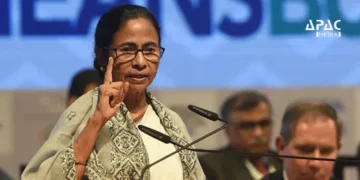















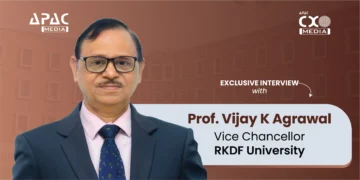










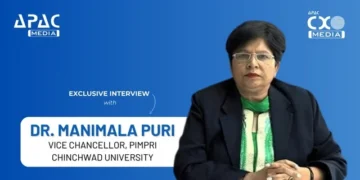


















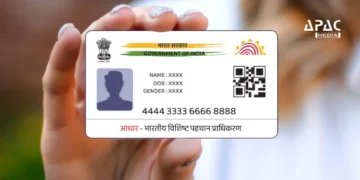









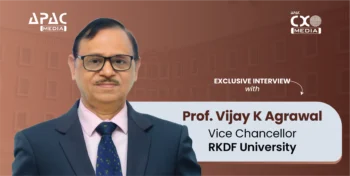


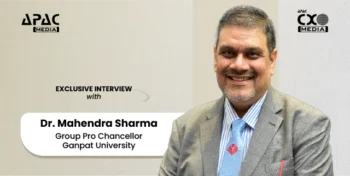










Discussion about this post